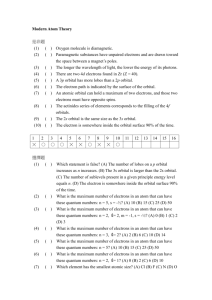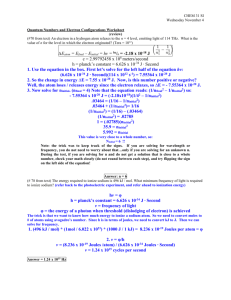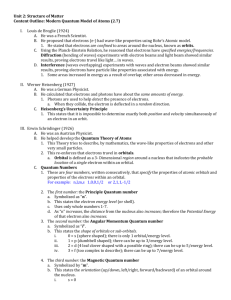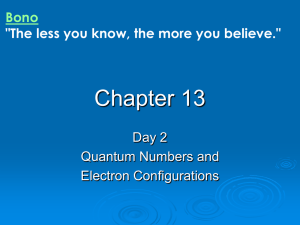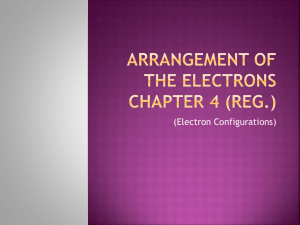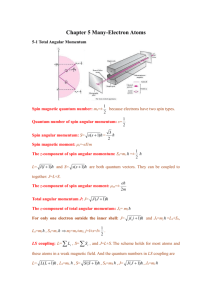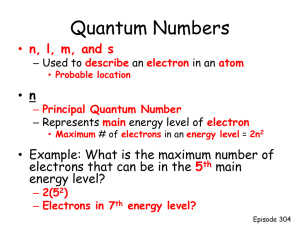How do the Energy Levels Fill Up with Electrons?
advertisement
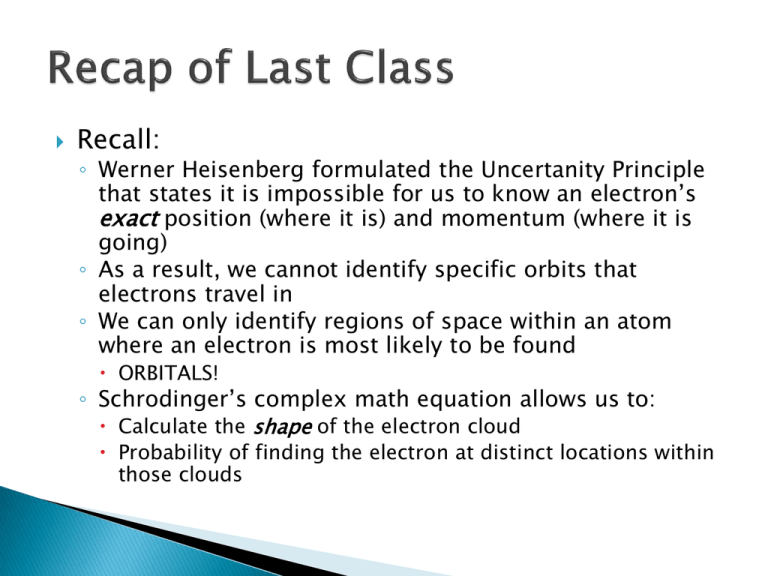
Recall: ◦ Werner Heisenberg formulated the Uncertanity Principle that states it is impossible for us to know an electron’s exact position (where it is) and momentum (where it is going) ◦ As a result, we cannot identify specific orbits that electrons travel in ◦ We can only identify regions of space within an atom where an electron is most likely to be found ORBITALS! ◦ Schrodinger’s complex math equation allows us to: Calculate the shape of the electron cloud Probability of finding the electron at distinct locations within those clouds An Introduction to Electron Configurations Complete the activity “Welcome to Atomos Apartments!” on page 208 We use electron configurations ◦ The way electrons are arranged in atoms There are rules to follow! ◦ Aufbau principle Electrons are added one at a time to the lowest energy orbitals available until all the electrons of the atom have been accounted for “aufbau” German for ‘build up or construct’ 1s 2s 2p 3s 3p 3d 4s 4p 4d 4f 5s 5p 5d 5f Pauli’s Exclusion Principle ◦ An orbital can hold only two electrons Hund’s Rule ◦ “Electrons must fill a sub-level such that each orbital has a spin up electron before they are paired with spin down electrons” A bus analogy: ◦ If you enter a bus and don’t know anyone on it, you will pick a seat that is completely empty rather than one that already has a person in it Electrons fill in order from lowest to highest energy The Pauli exclusion principle holds. An orbital can hold only two electrons Two electrons in the same orbital must have opposite signs (spins) You must know how many electrons can be held by each orbital ◦ ◦ ◦ ◦ 2 for s 6 for p 10 for d 14 for f Hund’s rule applies. The lowest energy configuration for an atom is the one having the maximum number of unpaired electrons for a set of orbitals ◦ By convention, all unpaired electrons are represented as having parallel spins with the spin “up” Just a thought… ◦ How do you determine the number of electrons in an element? Examples: ◦ ◦ ◦ ◦ Oxygen Magnesium Argon Scandium Use the Noble Gas symbol to abbreviate or shorten the electron configuration ◦ Krypton ◦ Rubidium ◦ Zirconium Use Quantum Numbers! Each electron has a specific ‘address’ in the space around a nucleus An electrons ‘address’ is given as a set of four quantum numbers Each quantum number provides specific information on the electrons location state town house number street state (energy level) - quantum number n town (sub-level) - quantum number l street (orbital) - quantum number ml house number (electron spin) - quantum number ms Same as Bohr’s n Integral values: 1, 2, 3, …. Indicates probable distance from the nucleus ◦ Higher numbers = greater distance from nucleus ◦ Greater distance = less tightly bound = higher energy Integral values from 0 to n - 1 for each principal quantum number n Indicates the shape of the atomic orbitals Table 7.1 Angular momentum quantum numbers and corresponding atomic orbital numbers Value of l 0 1 2 3 4 Letter used s p d f g Integral values from l to -l, including zero Relates to the orientation of the orbital in space relative to the other orbitals ◦ 3-D orientation of each orbital An orbital can hold only two electrons, and they must have opposite spins ◦ Spin can have two values, +1/2 and -1/2 Pauli Exclusion Principle (Wolfgang Pauli) ◦ "In a given atom no two electrons can have the same set of four quantum numbers" Complete the Closer on Page 206 Begin homework on page 209 – FRONT AND BACK!



